AI Chatbot Solutions Driving Business Success in 2025
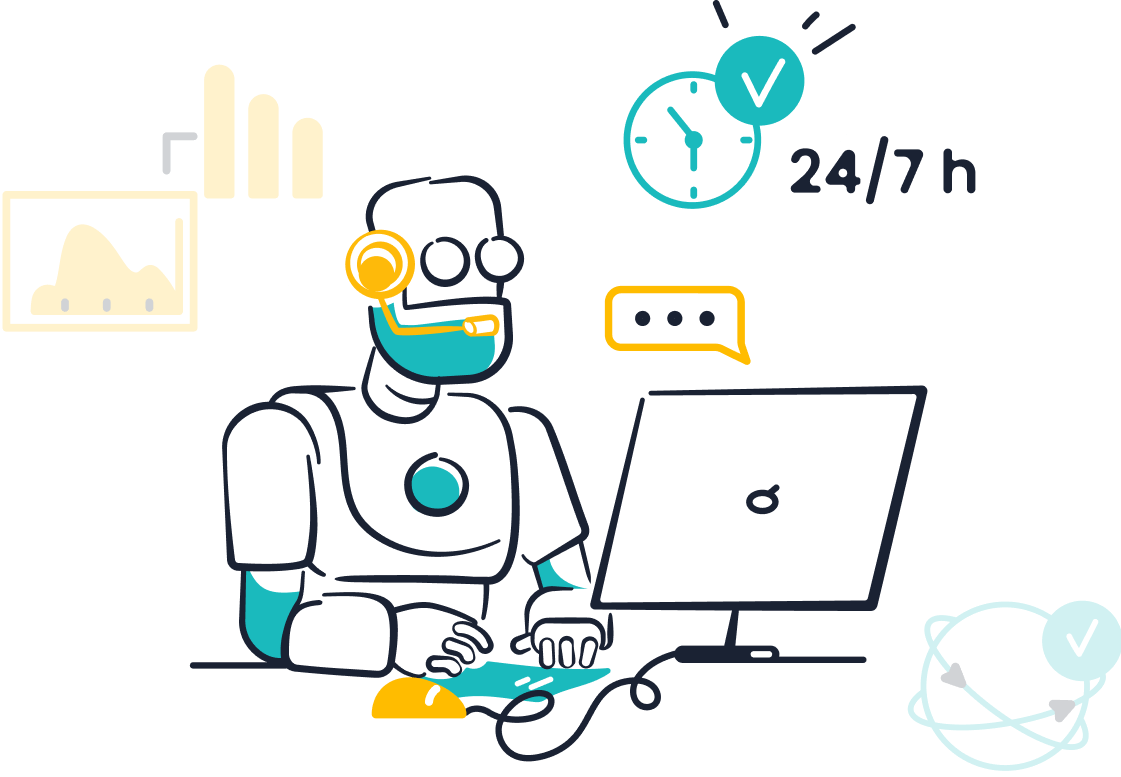
Imagine a world where your business operates 24/7, delivering instant responses to customer queries while saving costs. That’s the power of AI chatbot solutions. These tools have transformed how businesses interact with customers. By 2025, chatbots will handle nearly 70% of conversations from start to finish, significantly reducing the need for human intervention. They’re not just efficient—they’re cost-effective too, saving businesses around 30% on customer support expenses.
The global chatbot market is growing fast, projected to hit $27.3 billion by 2030. Staying competitive means embracing this digital transformation. Companies like Sobot, with their advanced AI-driven chatbots, are already helping businesses enhance customer support and boost efficiency. Whether you're in retail, education, or finance, adopting these solutions today ensures you won’t just survive but thrive in 2025.
The Rise of AI Chatbot Solutions
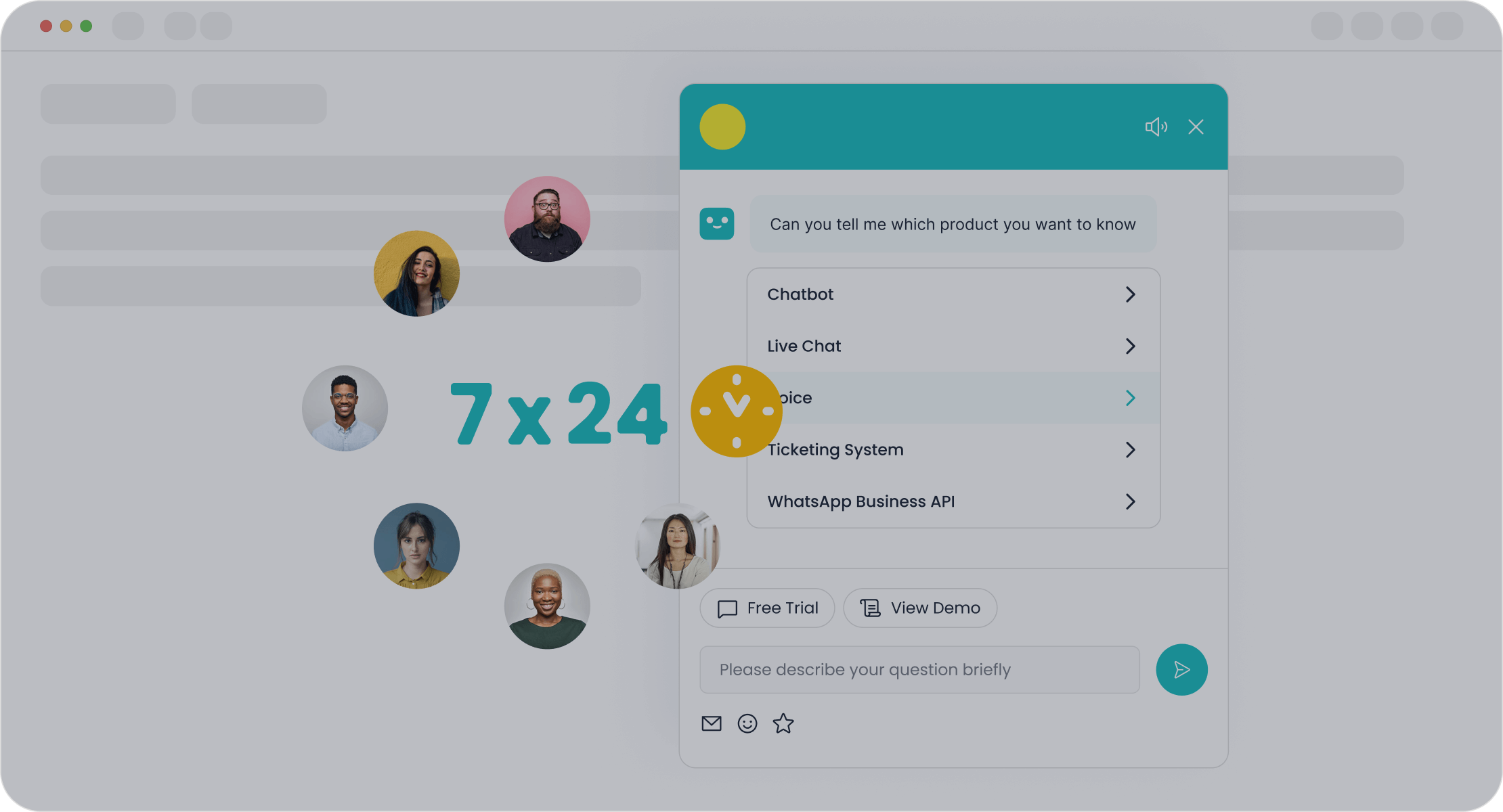
Advancements in AI Technology
AI has come a long way in recent years, and you’ve probably noticed how it’s reshaping the way businesses operate. Today, AI is smarter, faster, and more adaptable than ever. Companies are using it to automate tasks, improve productivity, and cut costs. Did you know that 75% of generative AI users aim to automate their work? This trend is helping businesses save time and focus on what really matters—strategy and creativity.
The numbers speak for themselves. The global AI market, valued at $208 billion in 2023, is expected to skyrocket to $1.8 trillion by 2030. That’s a massive leap! Businesses leveraging AI have already seen a 22% reduction in process costs and a 45% boost in profits. These advancements are not just about efficiency; they’re about staying ahead in a competitive world.
The Role of AI Knowledge Base Chatbots
AI knowledge base chatbots are game-changers when it comes to managing information. Imagine having a tool that provides instant answers, organizes content, and learns from every interaction. That’s exactly what these chatbots do. They make it easier for your customers to find what they need without waiting for human assistance.
These chatbots don’t just stop at answering questions. They personalize the experience for each user, making interactions feel tailored and meaningful. Plus, they’re scalable. Whether you’re handling ten queries or ten thousand, AI knowledge base chatbots can manage it all without breaking a sweat. They also continuously improve, identifying gaps in your knowledge base and filling them over time.
Why AI Chatbots Are Indispensable in 2025
By 2025, AI chatbots will be essential for any business looking to thrive. They’re not just tools; they’re strategic assets. For instance, AI chatbots can handle unlimited customer interactions simultaneously, ensuring top-notch service even during peak times. This scalability is a game-changer for businesses aiming to grow without compromising quality.
The cost-saving potential is huge. Juniper Research estimates that AI chatbots will save businesses $8 billion annually by 2025. They also enhance customer experiences by analyzing behavior and offering personalized recommendations. Think about how Amazon suggests products you didn’t even know you wanted—that’s AI in action.
In short, AI chatbots are more than just a trend. They’re the future of business success, helping you save money, improve efficiency, and deliver exceptional customer experiences.
Key Benefits of AI Chatbots for Businesses
Enhancing Customer Service with Chatbot Solutions
Imagine a world where your customers never have to wait for answers. AI chatbots make this possible by delivering instantaneous responses, 24/7. Whether it’s resolving a query, tracking an order, or providing product recommendations, chatbots ensure your customers always feel supported. In fact, 64% of consumers value round-the-clock availability, and 80% report positive experiences with chatbots. That’s a game-changer for customer engagement.
Take Spotify, for example. Their chatbot helps users manage playlists and subscriptions effortlessly, enhancing customer satisfaction and loyalty. Similarly, Sobot’s AI chatbot goes a step further by offering multilingual support and integrating seamlessly with platforms like WhatsApp and SMS. This ensures your customers can interact with your business on their preferred channels, creating a personalized and frictionless experience.
AI chatbots also excel at handling high volumes of inquiries. During peak shopping seasons, they can manage thousands of interactions simultaneously, ensuring no customer feels ignored. This scalability not only improves customer service but also boosts your brand’s reputation.
Boosting Operational Efficiency and Cost Savings
AI chatbots are not just about improving customer service—they’re also a powerhouse for operational efficiency. By automating repetitive tasks, chatbots free up your team to focus on more strategic activities. For instance, businesses using chatbots have reported a 30-40% reduction in customer service costs. That’s a significant saving you can reinvest in other areas of your business.

Sobot’s AI chatbot is a perfect example of how automation can transform operations. It autonomously resolves regular queries, improving productivity by 70%. Plus, it operates 24/7, saving up to 50% on additional agent costs. The chatbot’s ability to triage inquiries ensures that complex issues are escalated to human agents, optimizing resource allocation.
Operational metrics further validate the efficiency of AI chatbots. For example:
- Goal Completion Rate: Measures how effectively chatbots complete tasks.
- Customer Satisfaction (CSAT): Indicates how happy customers are with chatbot interactions.
- Cost Savings: Reflects the financial benefits of reduced operational expenses.
The ROI on AI chatbots is impressive, with 57% of businesses reporting strong returns within 6 to 18 months. Whether it’s reducing document processing time by 80% or cutting inventory carrying costs by 25%, the impact on operational efficiency is undeniable.
Driving Revenue Growth Through AI-Powered Interactions
AI chatbots don’t just save money—they help you make more of it. By leveraging artificial intelligence, these tools analyze customer behavior and provide personalized recommendations, boosting sales and conversions. For instance, eCommerce businesses using AI chatbots have seen a 20% increase in sales by recovering abandoned carts and delivering targeted promotions.

Sobot’s AI chatbot takes this a step further with features like proactive push messaging and real-time intent assistance. These capabilities enhance customer engagement, driving a 20% boost in conversions. In the financial services sector, AI-powered bots have increased lead conversions by 25%, showcasing their versatility across industries.
Here’s a quick look at how AI chatbots drive growth:
- Companies adopting AI in sales processes report a 50% increase in leads.
- Call times are reduced by up to 70%, improving efficiency.
- Sales forecasting accuracy improves by 10-20%, enabling better decision-making.
The numbers don’t lie. Businesses using AI chatbots report a 25-40% increase in sales productivity. Whether you’re in retail, healthcare, or education, these tools are essential for scaling your operations and maximizing revenue.
Essential Features of AI Chatbot Solutions in 2025
Multichannel and Omnichannel Support
Imagine being able to connect with your customers wherever they are—whether it’s on WhatsApp, email, or social media. That’s the magic of multichannel and omnichannel support. These features ensure your AI chatbot can engage users across multiple platforms seamlessly. Instead of juggling disconnected systems, you get one unified experience that feels smooth and personalized.
Here’s why this matters:
- Multichannel communication lets you interact with customers on their preferred platforms, boosting satisfaction.
- Omnichannel integration ties everything together, so conversations flow naturally, even if they switch from chat to email.
- Businesses that adopt these systems see higher customer retention rates. A 5% improvement in retention can increase profits by up to 95%.
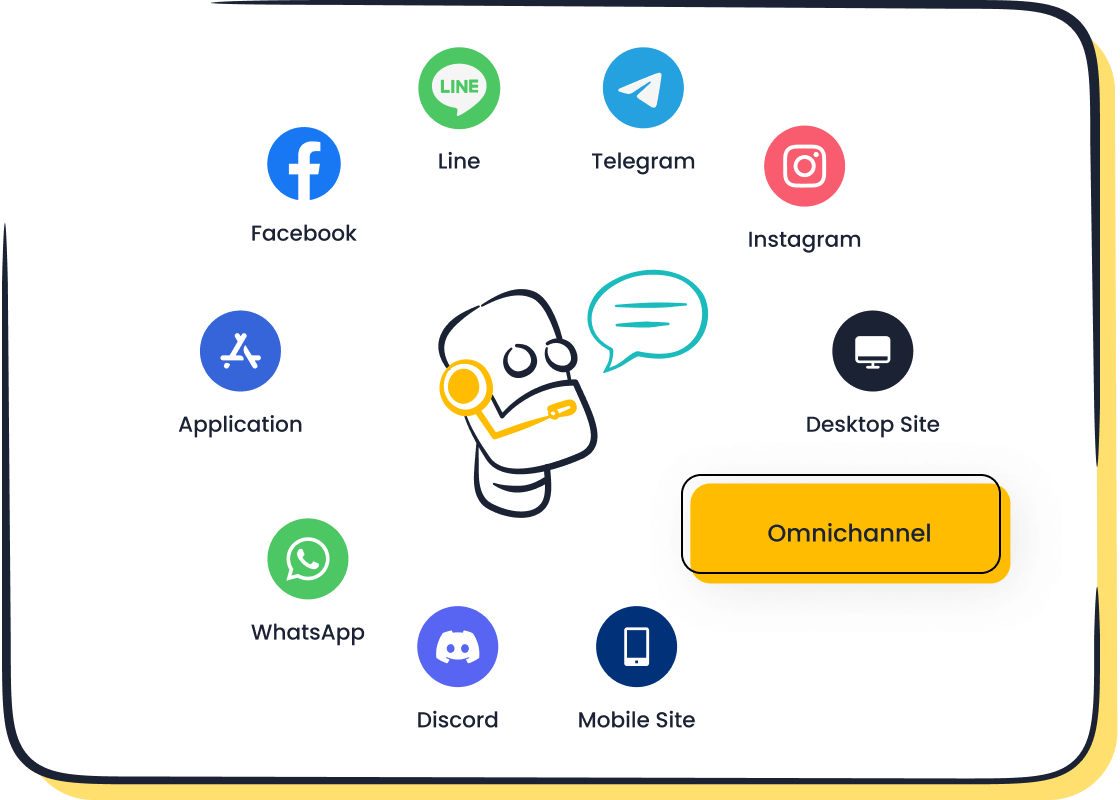
With Sobot’s AI chatbot, you can automate processes across platforms, saving time and improving responsiveness. Plus, it helps you identify trends in customer inquiries, allowing you to proactively create helpful content. This reduces future questions and keeps your customers happy.
Secure Data Handling and Privacy Compliance
Your customers trust you with their data, and keeping it safe is non-negotiable. AI chatbots in 2025 must prioritize secure data handling and compliance with regulations like GDPR and CCPA. These measures protect against breaches and legal risks, ensuring your business stays on the right side of the law.
What does this look like in practice?
- Encryption safeguards sensitive information during every interaction.
- Regular employee training fosters a culture of vigilance and compliance.
- Continuous backups ensure data remains secure, even in emergencies.

Sobot’s AI solutions excel in this area, offering robust security features that keep your customer data safe. By prioritizing privacy, you build trust and strengthen your brand reputation.
Continuous Learning and Adaptability
AI chatbots aren’t static—they evolve. Continuous learning allows them to improve with every interaction, adapting to new trends and customer needs. This adaptability ensures your chatbot stays relevant and effective, even as your business grows.
A study on AI usage highlights how trust and perceived control influence user behavior over time. Chatbots that learn and adapt build stronger relationships with users, making them indispensable in industries like education and healthcare.
Sobot’s AI chatbot takes this a step further with autonomous learning capabilities. It identifies gaps in your knowledge base and optimizes itself, ensuring it delivers accurate and empathetic responses. This adaptability keeps your operations efficient and your customers satisfied.
Industry Applications of AI Chatbots
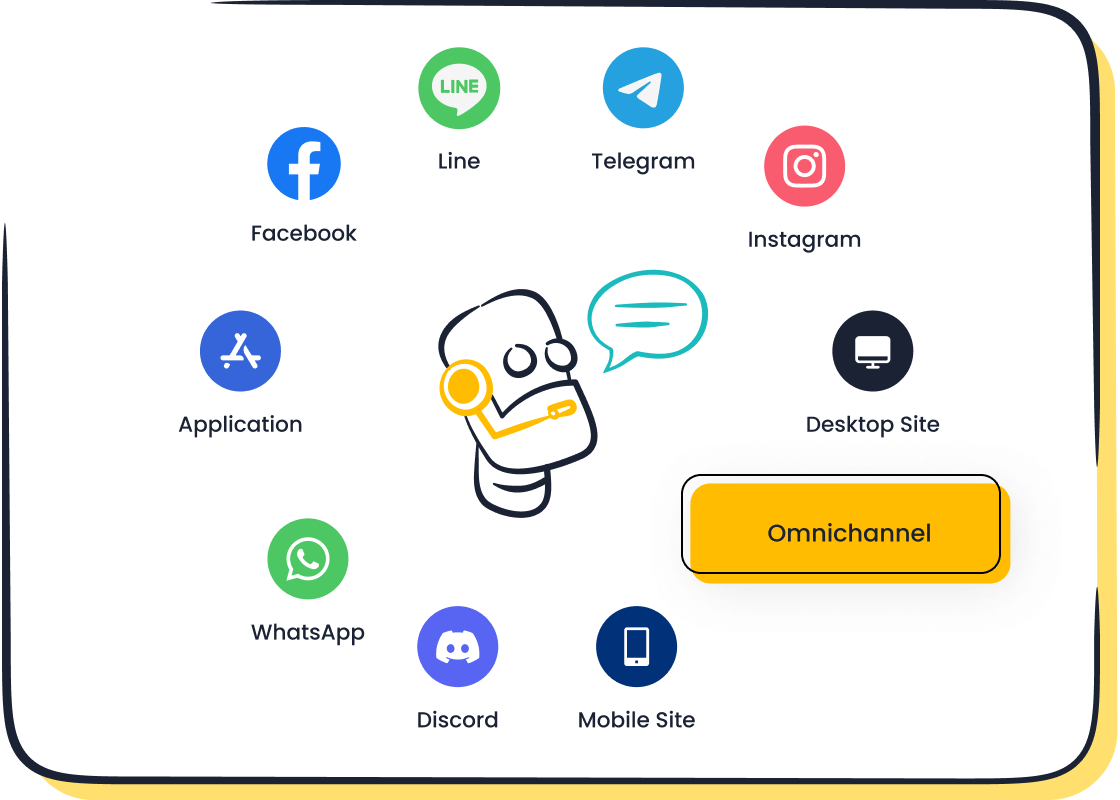
Retail and E-Commerce: Personalized Shopping Experiences
AI chatbots are revolutionizing retail and e-commerce by delivering personalized shopping experiences. Imagine browsing an online store and receiving tailored product recommendations based on your preferences. That’s the magic of AI-powered personalization. Retailers using AI chatbots have reported a 42% improvement in customer lifetime value. These tools analyze customer behavior, suggest products, and even recover abandoned carts, boosting sales by up to 20%.

Take Amazon, for example. Its recommendation engine contributes 35% of its income by offering products customers didn’t know they needed. Similarly, Shopify merchants using AI chatbots see a 20% increase in quarterly sales. Sobot’s AI chatbot takes this further by integrating with platforms like WhatsApp and SMS, ensuring seamless communication across channels. It also uses proactive messaging to re-engage customers, driving conversions and enhancing loyalty.
| Statistic Description | Value |
|---|---|
| Contribution of Amazon's recommendation engine | 35% of overall income |
| Average gain in quarterly sales for Shopify merchants | 20% |
| Increase in consumer interaction rates | 40% |
AI chatbots are essential for businesses aiming to create personalized shopping experiences. They don’t just improve sales—they build lasting customer relationships.
Customer Service Centers: 24/7 Multilingual Support
Customer service centers thrive on efficiency and accessibility. AI chatbots provide 24/7 multilingual support, ensuring customers get help whenever they need it. This feature is especially valuable for global businesses. Vodafone’s multilingual voicebot improved customer satisfaction by 40%, while AirAsia saw a 25% boost in support efficiency.
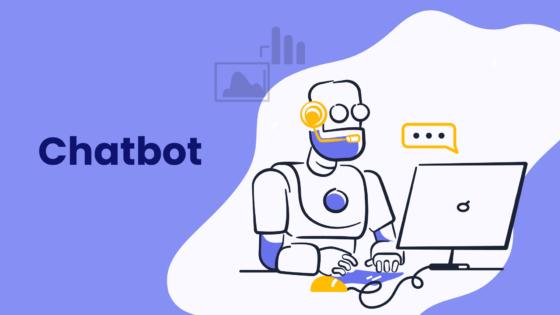
Sobot’s AI chatbot excels in this area. It supports multiple languages and operates round the clock, making it ideal for businesses with diverse customer bases. Whether it’s resolving queries or escalating complex issues to human agents, the chatbot ensures smooth operations. This not only reduces costs but also enhances customer satisfaction.
| Metric | Impact on Customer Service Outcomes |
|---|---|
| Customer Satisfaction Scores | 30% improvement reported by Vodafone |
| Operational Efficiency | 25% boost for AirAsia’s support team |
| Brand Reputation | 70% of customers recommend brands with excellent service |
With AI chatbots, you can deliver exceptional service while saving time and resources. They’re a win-win for businesses and customers alike.
Healthcare: Patient Assistance and Scheduling
AI chatbots are transforming healthcare by improving patient assistance and scheduling. They handle routine tasks like appointment bookings, medication reminders, and follow-ups, freeing up healthcare professionals for urgent cases. For example, a chatbot can remind a heart patient to log their blood pressure daily, alerting doctors if something’s wrong. This proactive approach enhances patient engagement and health outcomes.

Sobot’s AI chatbot offers personalized engagement by analyzing patient data. It sends tailored educational materials and collects information to improve treatment plans. Healthcare providers using chatbots report reduced administrative overhead and better patient satisfaction. These tools also ensure 24/7 availability, which is crucial for managing chronic conditions.
| Benefit | Description |
|---|---|
| Increased Access | Enhances access to medical support and guidance |
| Reduced Workload | Handles routine tasks, allowing professionals to focus on urgent cases |
| Personalized Engagement | Provides tailored responses and educational materials |
| Enhanced Data Collection | Collects patient information for better healthcare decisions |
AI chatbots are reshaping healthcare by making it more efficient and patient-focused. They’re not just tools—they’re lifesavers.
Education: Virtual Learning Assistants
Imagine having a personal tutor available 24/7, ready to guide you through tricky math problems or explain complex science concepts. That’s what virtual learning assistants bring to the table. These AI-powered tools are transforming education by making learning more accessible, personalized, and engaging.
Teachers love them because they save time and improve communication. In fact, 83% of educators say virtual assistants make it easier to connect with students. They also free up an average of 7.4 hours per week, giving teachers more time to focus on lesson planning and one-on-one support.
Students benefit even more. Virtual learning assistants deliver personalized interventions, tailoring lessons to individual needs. On average, students receive 27 customized learning activities per week, boosting their understanding and confidence. This approach leads to a 23% improvement in assessment scores and a 31% increase in engagement.
Tip: Schools that invest in teacher training see even better results. With at least 15 hours of training, effectiveness rates jump by 72%.
Here’s a snapshot of how virtual learning assistants are making a difference:
| Statistic | Description |
|---|---|
| 1 | 83% of teachers report improved communication efficiency |
| 2 | Teachers save an average of 7.4 hours per week |
| 3 | Students show an average 23% improvement in assessment scores |
| 4 | Student engagement increases by 31% |
| 5 | 92% of research studies demonstrate statistically significant positive effects |
| 6 | Virtual assistants deliver an average of 27 personalized learning interventions per student per week |
| 7 | Schools providing at least 15 hours of teacher training show 72% higher effectiveness rates |
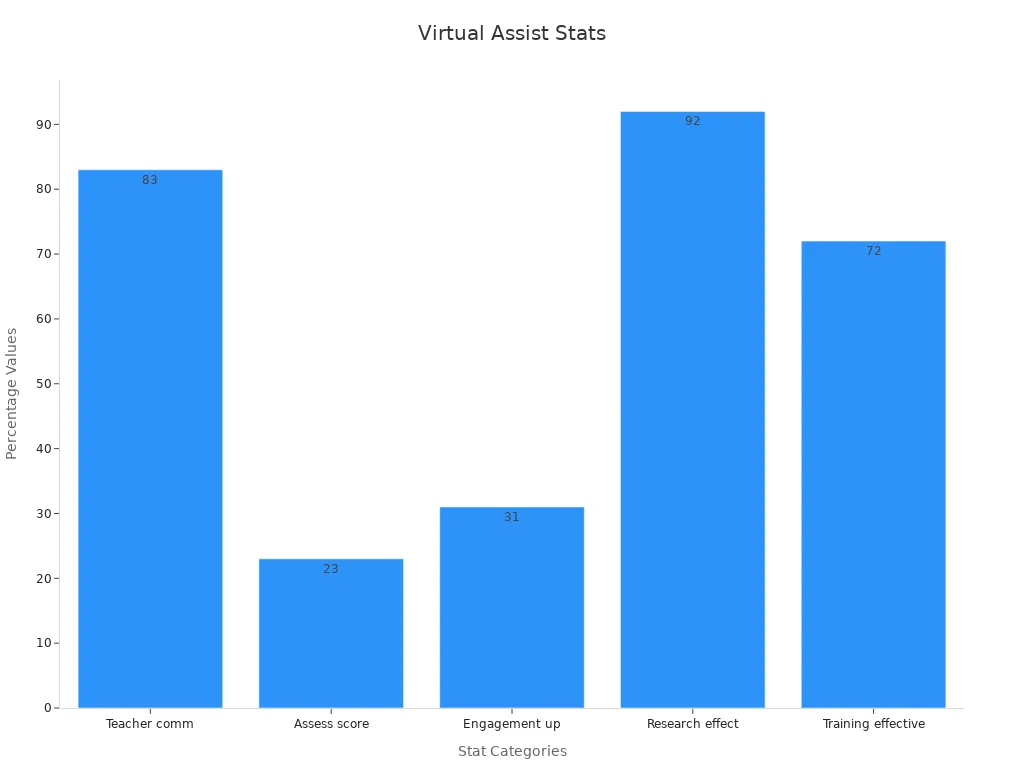
Virtual learning assistants aren’t just tools—they’re partners in education. They help you learn at your own pace, keep you engaged, and make studying less stressful. Whether you’re a teacher looking to simplify your workload or a student aiming to ace your exams, these assistants are changing the way education works.
Implementing AI Chatbot Solutions Effectively
Strategic Planning and Goal Setting
Before diving into AI chatbot implementation, you need a solid plan. Think of it as laying the foundation for a skyscraper. Without it, the structure won’t stand tall. Start by identifying your business goals. Are you aiming to improve customer satisfaction, reduce costs, or boost sales? Clear objectives will guide your chatbot strategy.
Here’s a simple approach to planning:
- Start Small: Begin with one manageable use case. For example, KLM Airlines launched its BlueBot chatbot on Facebook Messenger to handle basic customer queries. This allowed them to refine the system before scaling up.
- Prioritize Use Cases: Focus on areas where chatbots can make the biggest impact, like handling repetitive customer inquiries or providing 24/7 support.
- Think Transformation: Don’t just see chatbots as tools to replace humans. Use them to revolutionize how you engage with customers.
| Strategy | Description |
|---|---|
| Start Small | Begin with a manageable chatbot use case to iron out kinks before broader rollout. |
| Prioritize Use Cases | Focus on unique industry needs and business objectives for deploying chatbots. |
| Think Transformation | Consider chatbots as transformative tools for customer engagement, not just replacements for humans. |
By following these steps, you’ll set your chatbot project up for success. Remember, a well-planned strategy ensures your chatbot aligns with your business goals and delivers real value.
Integration with Existing Systems
Integrating AI chatbots with your current systems can feel like solving a complex puzzle. But with the right approach, it’s entirely manageable. Start by assessing your existing infrastructure. Are your systems compatible with modern AI technologies? If not, consider incremental upgrades to bridge the gap.
Here are some common challenges and how to tackle them:
- Data Privacy and Security: Chatbots process sensitive customer data, making them targets for cyber threats. Implement strong encryption and regular audits to protect user information.
- Legacy Systems: Many businesses struggle with outdated infrastructure. A phased integration approach and standardized APIs can help overcome compatibility issues.
- Bias in AI Models: Chatbots can inherit biases from their training data. Regularly audit your chatbot’s performance and use diverse datasets to ensure fairness.
Successful integration examples show that businesses can overcome these hurdles. For instance, companies that conduct system audits and implement gradual upgrades report smoother chatbot adoption. By addressing these challenges head-on, you’ll ensure your chatbot works seamlessly with your existing systems.
Training Teams for AI Chatbot Adoption
Even the smartest chatbot won’t succeed without a well-prepared team. Training your staff is crucial for maximizing the benefits of AI chatbots. Start by familiarizing your team with the chatbot’s features and capabilities. This ensures they know how to use it effectively and troubleshoot minor issues.
Training programs deliver impressive results. For example:
- Resolutions of customer support issues per hour increase by 35%.
- Task completion rates improve by 25%.
- Key facts included in reports jump by 49%.
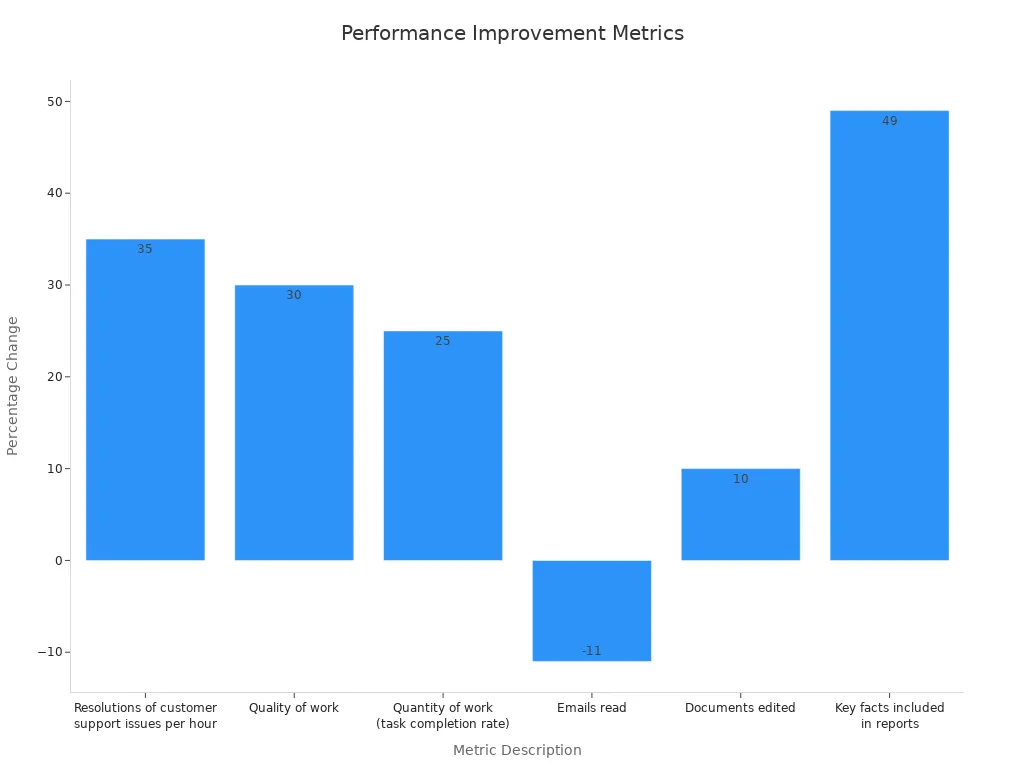
Here’s how to structure your training:
- Hands-On Practice: Let your team interact with the chatbot in real-world scenarios.
- Workshops and Webinars: Provide regular learning opportunities to keep everyone up-to-date.
- Feedback Loops: Encourage employees to share their experiences and suggest improvements.
Sobot’s AI chatbot simplifies this process with its user-friendly interface. Its no-coding-required setup means your team can quickly learn to design and deploy workflows. By investing in training, you’ll empower your team to harness the full potential of AI chatbots, improving both productivity and customer satisfaction.
Monitoring and Optimizing Chatbot Performance
Once your chatbot is up and running, the work doesn’t stop there. To keep it performing at its best, you need to monitor its activity and optimize it regularly. Think of it like maintaining a car. Without regular check-ups, even the best vehicle won’t run smoothly. The same goes for chatbots. By keeping an eye on key metrics and making adjustments, you can ensure your chatbot delivers top-notch performance and keeps your customers happy.
Key Metrics to Track
To understand how well your chatbot is performing, you’ll need to track specific metrics. These key performance indicators (KPIs) give you a clear picture of what’s working and what needs improvement. Here’s a quick breakdown of the most important ones:
| KPI | Description |
|---|---|
| User Engagement | Measures the number of interactions users have with the chatbot, indicating its popularity. |
| Response Accuracy | Evaluates how accurately the chatbot responds to user queries, crucial for customer satisfaction. |
| Resolution Rate | Tracks the percentage of inquiries resolved by the chatbot without human intervention. |
| Average Response Time | Monitors the time taken by the chatbot to respond to user queries, impacting user experience. |
| User Retention Rate | Assesses how many users return to interact with the chatbot, providing insights into effectiveness. |
By keeping tabs on these KPIs, you can identify areas where your chatbot excels and where it might need a little fine-tuning.
Additional Performance Indicators
Beyond the core KPIs, there are other metrics that can help you dig deeper into your chatbot’s performance. These include:
- Self-Service Rate: This shows how many users were able to resolve their issues without needing help from a human representative.
- Performance Rate: This measures how often users achieve their goals when interacting with the chatbot.
- Bounce Rate: This reflects the number of users who open the chatbot but leave without engaging further.
Tracking these indicators helps you understand how effectively your chatbot is meeting user needs and where improvements can be made.
Tips for Optimization
Monitoring performance is just the first step. To truly get the most out of your chatbot, you’ll need to optimize it based on the data you collect. Here are some tips to help you do that:
- Analyze User Feedback: Pay attention to what users are saying about your chatbot. Are they satisfied with the responses? Do they find the chatbot helpful? Use this feedback to make improvements.
- Update the Knowledge Base: A chatbot is only as good as the information it has. Regularly update its knowledge base to ensure it provides accurate and relevant answers.
- Test and Refine: Run tests to see how your chatbot performs in different scenarios. Adjust its responses and workflows to improve its effectiveness.
- Focus on Speed: Nobody likes waiting. If your chatbot’s response time is slow, look for ways to speed it up. This could mean optimizing its algorithms or reducing unnecessary steps in its workflows.
- Personalize Interactions: Use data to make interactions feel more personal. For example, if a user frequently asks about a specific product, the chatbot can proactively provide updates or recommendations related to that product.
Why Optimization Matters
Optimizing your chatbot isn’t just about improving its performance. It’s about creating a better experience for your customers. A well-optimized chatbot can handle more inquiries, provide faster responses, and deliver more accurate answers. This not only boosts customer satisfaction but also increases user retention and engagement. Plus, it helps you save time and resources by reducing the need for human intervention.
Pro Tip: Regularly review your chatbot’s performance metrics and make adjustments as needed. Small tweaks can lead to big improvements in user experience and efficiency.
By monitoring and optimizing your chatbot, you ensure it stays relevant, effective, and aligned with your business goals. It’s an ongoing process, but the rewards—happier customers, lower costs, and better results—are well worth the effort.
AI chatbots are reshaping the way businesses operate, making them faster, smarter, and more customer-focused. They boost engagement, resolve issues instantly, and improve satisfaction scores. Here’s a quick look at their impact:
| Metric | Description |
|---|---|
| User Engagement Rate | Shows how well your chatbot captures user attention. |
| Resolution Rate | Tracks the percentage of issues solved without human help. |
| Customer Satisfaction Score | Reflects how happy users are after interacting with your chatbot. |
| Total Conversations | Highlights overall interest and engagement with your chatbot. |
| Response Time | Measures how quickly your chatbot responds to inquiries. |
Sobot’s AI Chatbot takes these benefits further with 24/7 multilingual support, proactive messaging, and seamless integration. Ready to transform your business? Let Sobot help you deliver exceptional customer experiences and operational efficiency. 🌟 Learn more.
FAQ
What makes AI chatbots scalable for businesses?
AI chatbots handle unlimited interactions simultaneously, making them perfect for businesses of any size. Their scalability ensures they adapt as your business grows, managing increased customer demands without additional resources. This flexibility helps you maintain efficiency and customer satisfaction effortlessly.
How do AI chatbots improve customer service?
AI chatbots provide instant, 24/7 responses, ensuring customers never wait for help. They handle repetitive queries, freeing your team for complex tasks. By integrating AI with knowledge bases, chatbots deliver accurate answers, improving customer satisfaction and reducing response times.
Can AI chatbots integrate with existing systems?
Yes, most AI chatbots integrate seamlessly with your current tools, like CRM or ticketing systems. This ensures smooth workflows and better data management. Sobot’s chatbot, for example, connects with platforms like WhatsApp and SMS, enhancing communication across channels.
Are AI chatbots secure for handling customer data?
Absolutely. Modern AI chatbots prioritize data security with encryption and compliance with regulations like GDPR. They protect sensitive information, ensuring your customers’ trust and your business’s reputation remain intact.
How do AI chatbots save costs for businesses?
AI chatbots automate repetitive tasks, reducing the need for additional staff. They operate 24/7, cutting expenses on overtime or extra shifts. Businesses using chatbots report up to 50% savings on customer service costs while maintaining high-quality support.
See Also
Enhancing Customer Satisfaction Through E-commerce Chatbots
Steps to Develop a Successful Website Chatbot
Best 10 Websites Utilizing Chatbots This Year